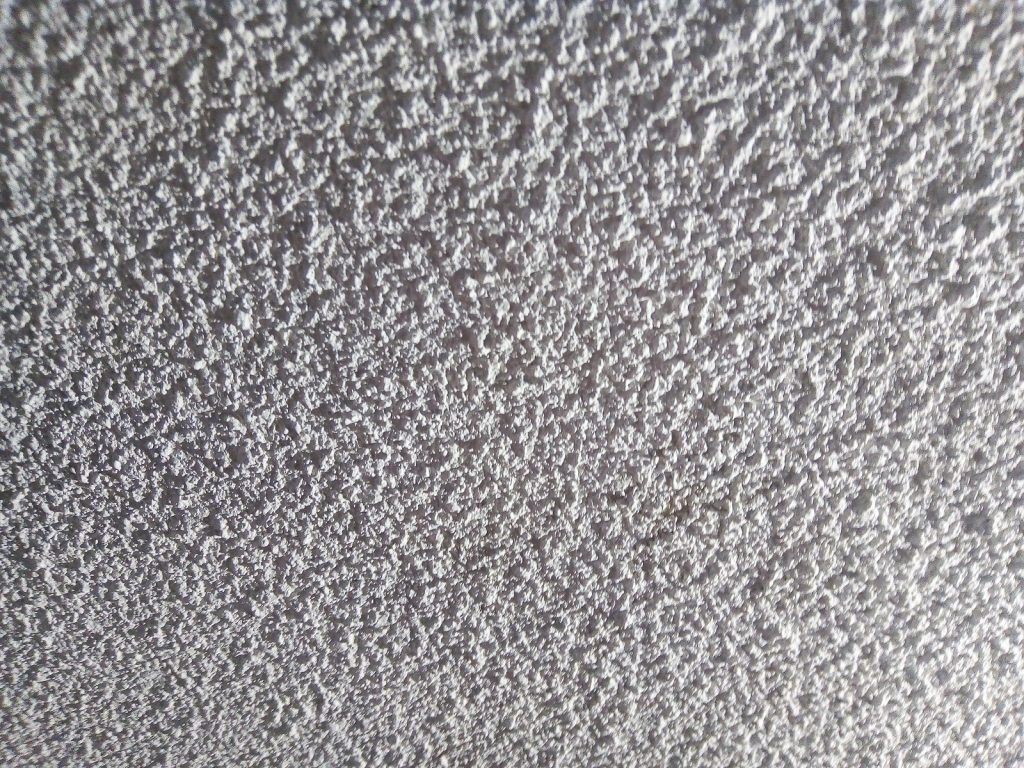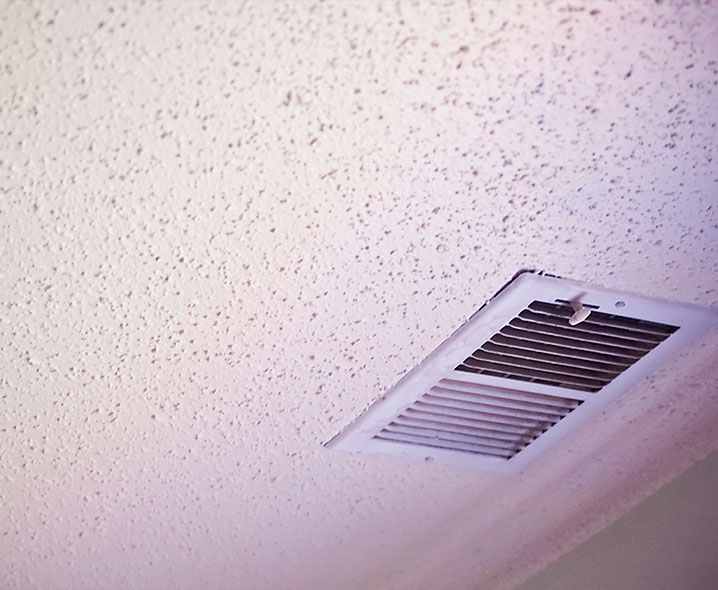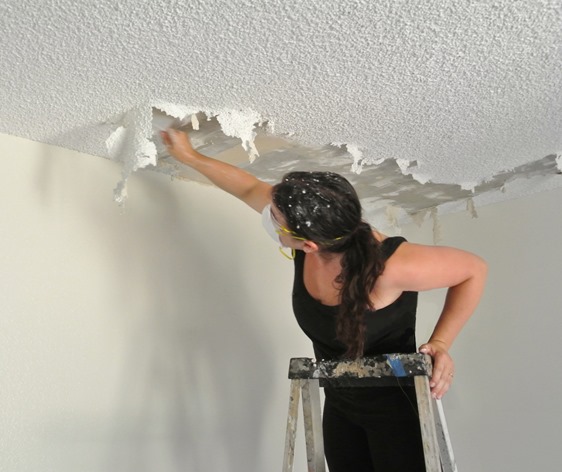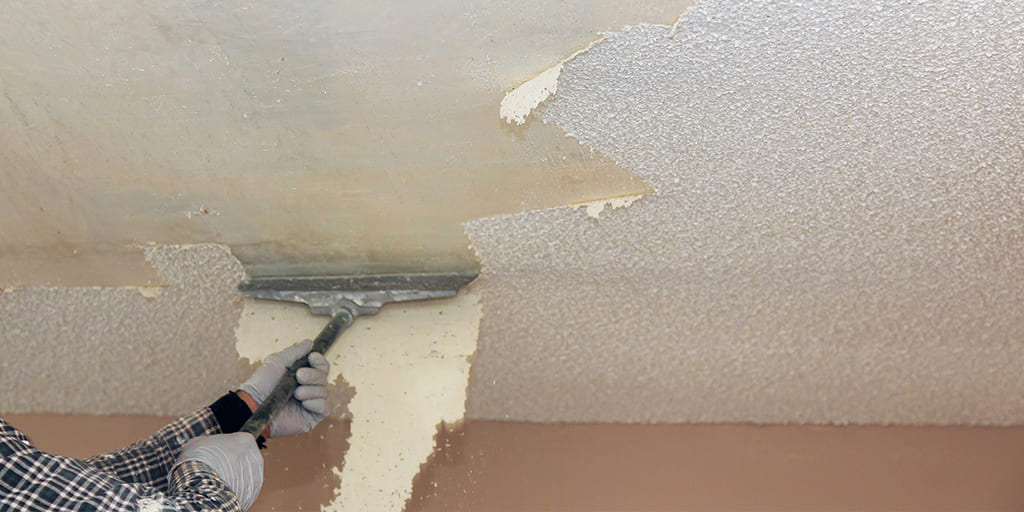Popcorn ceilings were a popular home improvement trend in the United States from the 1950s to the 1980s. Their reputation stemmed from their sound-absorbing and fire-resistant properties, as well as their cost-effective installation. Nevertheless, popcorn ceilings frequently contained asbestos, a naturally occurring mineral that poses health hazards to humans.

What is asbestos?
Asbestos comprises thin, fibrous crystals that occur naturally. Inhaling or ingesting these fibers can lead to severe health issues, such as lung cancer, mesothelioma, and asbestosis.
Did all popcorn ceilings contain asbestos?
No, not all popcorn ceilings contained asbestos. However, it’s estimated that up to 90% of popcorn ceilings installed before 1980 contained asbestos. This is because asbestos was a common ingredient in many building materials during that time, including popcorn ceilings, drywall, and insulation.
How can you tell if your popcorn ceiling contains asbestos?
The only way to determine if your popcorn ceiling contains asbestos is to have it tested. However, there are some signs that may indicate the presence of asbestos, including:
- The ceiling was installed before 1980.
- The ceiling has a rough, textured surface.
- The ceiling is discolored or damaged.
If you are concerned that your popcorn ceiling may contain asbestos, you should have it tested by a professional.
What are the risks of asbestos exposure?
Asbestos exposure can cause a number of serious health problems, including:
- Lung cancer
- Mesothelioma
- Asbestosis
Lung cancer is the most common type of cancer caused by asbestos exposure. Mesothelioma is a rare cancer of the lining of the lungs, abdomen, or chest. Asbestosis is a chronic lung disease that can cause shortness of breath, coughing, and chest pain.
How can you protect yourself from asbestos exposure?
If you think your popcorn ceiling may contain asbestos, you should take steps to protect yourself from exposure. These steps include:
- Avoiding disturbing the ceiling.
- Wearing a respirator when you are in the same room as the ceiling.
- Having the ceiling removed by a professional.
How to remove popcorn ceilings safely
If you decide to have your popcorn ceiling removed, it is important to do so safely. Only a licensed professional trained in safe asbestos handling should undertake asbestos removal.
Conclusion
Popcorn ceilings were a popular home improvement trend in the past, but they may contain asbestos, a hazardous material. If you think your popcorn ceiling may contain asbestos, you should have it tested by a professional.tunesharemore_vert


